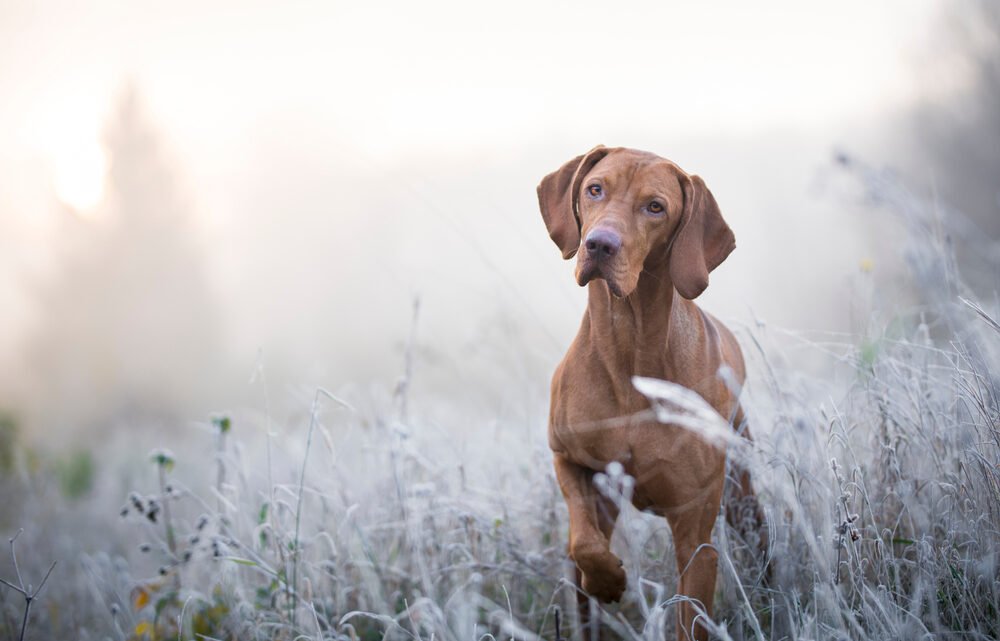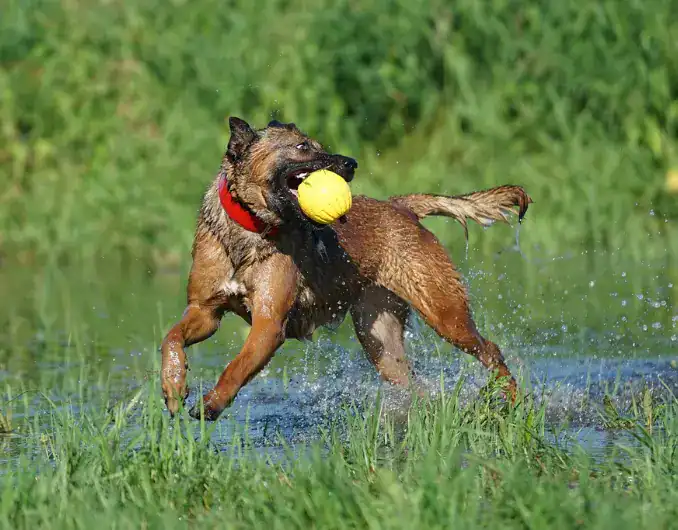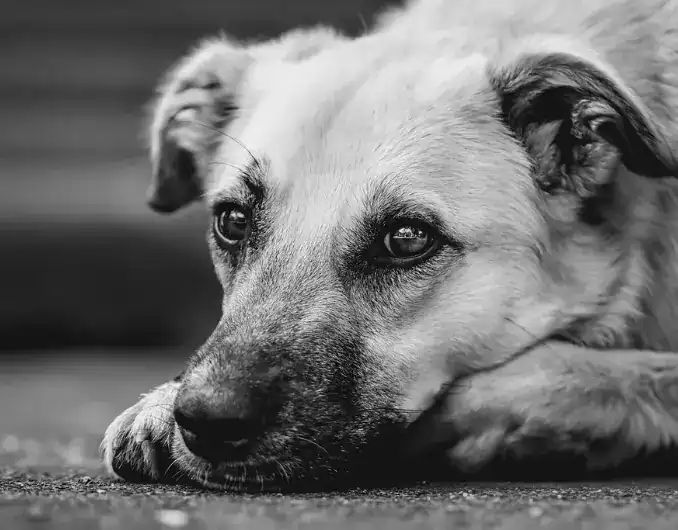
12 Signs of a Confident Dog/ Insecure Dog Body Language
When looking for signs of a confident dog, there are a few key behaviors that stand out. A confident dog walks with purpose, not rushing or hesitating. Its body language is relaxed, not tense, with a neutral tail that isn’t tucked or raised too high. Their ears are in a natural position, neither flattened nor overly forward, and their eyes are calm, not darting around nervously. These dogs are also comfortable interacting with people and other dogs without being overly shy or aggressive. They’re curious, exploring their environment without hesitation, and they respond to challenges with a calm and composed attitude. Confident dogs approach situations with self-assurance, showing no signs of fear or anxiety. Essentially, they feel secure in their own skin and the world around them. If your dog is displaying these traits, you’re likely seeing the signs of a confident dog!
How Can You Identify Confident Dog Body Language?
A confident dog is easy to spot by its body language. Dogs that are comfortable in their surroundings often exhibit relaxed, open, and calm postures. A dog that walks with a relaxed stride, without excessive tension, shows it feels secure. It won’t be overly stiff or tense but rather moves freely. The key? Confidence looks effortless. A dog that carries itself with pride, and without hesitation, is likely at ease in its world.
What Does a Relaxed Posture in Dogs Indicate?
When a dog’s posture is relaxed—ears neutral, tail in a natural position, and body loose—it’s a good sign of confidence. Dogs in this state are unbothered by their environment, not worried about threats or stress. They’re aware of their surroundings, but they aren’t on high alert. It’s a peaceful state of being. A relaxed dog trusts its environment and the people in it, showing that it doesn’t feel the need to act aggressively or hide. It’s all about balance.
Why Does a Dog Hold Its Tail High When Confident?
A dog with its tail held high is projecting confidence, not aggression. It’s a sign of pride, showing that the dog feels secure in its space. Dogs often hold their tail high when they are relaxed yet alert, ready to interact without fear. A high tail indicates a dog’s comfort with itself and its surroundings. It’s not just a physical stance—it’s an emotional one too, reflecting a dog’s mental confidence in its environment and relationships.
How Do Ears and Eyes Reflect a Dog’s Confidence?
The eyes and ears are telltale signs of a confident dog. A dog with its ears in a neutral position—neither pinned back nor overly forward—shows relaxation and security. Their eyes should be calm, with soft, unblinking gazes that aren’t darting around in fear. Confident dogs will look you in the eye without hesitation. They’re comfortable with their environment and don’t feel threatened. It’s a way of saying, “I’m here, and I’m okay with what’s going on.”
What Behavioral Traits Show a Dog’s Confidence?
A confident dog exhibits specific behavioral traits that show their comfort and ease in the world. These dogs are assertive, not aggressive, and they move with a sense of purpose. They don’t shy away from new situations or interactions. Their behaviors include a calm demeanor and consistent social interaction. Confident dogs are self-assured, giving them the ability to thrive in various environments. Their actions speak volumes—whether exploring new places or meeting new people.
Key Behavioral Traits of a Confident Dog:
Relaxed posture: The dog moves fluidly, without stiffness.
Neutral tail position: Not too high or low, showing contentment and balance.
Engagement in social situations: Approaches other dogs and people without hesitation
No signs of anxiety: Reacts calmly to new experiences.
- These behaviors point to a dog that feels secure and in control.
How Does a Confident Dog Interact with Other Dogs and People?
Confident dogs engage with others calmly and assertively, showing no fear. They interact in a balanced manner, whether meeting other dogs or humans. For example, a confident dog will approach other dogs without backing down or becoming overly dominant. With humans, they’re not shy to initiate contact but also respect boundaries. They’re self-assured, and their behavior in social settings is clear and comfortable. This ease of interaction shows the dog’s mental and emotional stability, making it a joy for owners and companions alike.
Why Do Confident Dogs Explore Their Environment Fearlessly?
Confident dogs are curious and fearless when exploring new places. They don’t hesitate to check out unfamiliar areas, whether it’s a new park or even a different room in the house. Exploration isn’t a sign of recklessness—it’s a sign that the dog feels secure enough to venture out and experience the world. They trust themselves and their environment, taking everything in without panic. This comfort with exploration reflects mental confidence and control over their surroundings.
What Role Does Playfulness Have in a Confident Dog’s Behavior?

Play is a core indicator of a dog’s confidence. A confident dog will often initiate play, whether with toys, other dogs, or humans. Playfulness in dogs is an expression of their joy and security, as they feel safe enough to be relaxed and have fun. Confident dogs may challenge other dogs in play but in a non-aggressive way. This behavior shows that they are mentally and physically at ease. They use play to bond, learn, and stay active, contributing to their overall health and well-being.
How Does a Confident Dog Respond to Stressful Situations?
Confident dogs typically remain calm and composed when faced with stress. They don’t panic or react impulsively. Instead, they rely on their instincts and experience to handle new or difficult situations. Whether it’s a loud noise or an unfamiliar person, a confident dog assesses the situation without excessive fear. Confidence helps them manage stress better than anxious dogs, allowing them to bounce back more quickly.
What Does Calmness in Stressful Environments Reveal About a Dog’s Confidence?
A dog’s ability to stay calm during stress signals a high level of confidence. Confident dogs don’t get overwhelmed easily. Their relaxed posture, focused demeanor, and lack of aggressive or anxious behaviors indicate they feel secure in their ability to handle the situation. For example, a dog that remains unbothered by a thunderstorm or a busy street is showing that it trusts itself and its environment. Calmness in the face of stress is a core trait of confident dogs.
Can a Confident Dog Handle New Situations Better Than an Anxious Dog?
Absolutely. Confident dogs are more adaptable and can handle new situations better than anxious dogs. They may approach unfamiliar scenarios with curiosity, confidence, and assertiveness, while anxious dogs often retreat or display fearful behaviors. A confident dog is comfortable exploring new places, meeting strangers, or experiencing change because it doesn’t feel threatened. It’s not that they lack caution—it’s just that they know how to navigate the unknown with grace, which anxious dogs struggle to do.
What Are the Differences Between a Confident Dog and an Overly Dominant Dog?
Confident Dog vs. Overly Dominant Dog
| Trait | Confident Dog | Overly Dominant Dog |
|---|---|---|
| Posture | Relaxed, balanced, open | Stiff, rigid, often aggressive |
| Social Interaction | Approachable, respectful | Challenges others, tries to control |
| Body Language | Neutral tail, soft eyes, calm demeanor | Raised tail, direct stare, tense body |
| Response to New Situations | Calm, curious, adaptable | Overly controlling, stressed |
| Emotional State | Secure, relaxed, at ease | Needs to assert dominance, fearful |
Confidence vs. Aggression in Dogs
| Behavior | Confident Dog | Aggressive Dog |
|---|---|---|
| Body Language | Relaxed, soft eyes, neutral posture | Stiff, rigid body, growling, showing teeth |
| Response to Threats | Calm, stands its ground, non-reactive | Reacts aggressively, lunges, barks |
| Social Interactions | Open, friendly, engages without hesitation | Pushes boundaries, challenges authority |
| General Demeanor | At ease, self-assured | Anxious, easily frustrated |
How Can You Boost Your Dog’s Confidence?
Boost your dog’s confidence through consistent, positive experiences. Positive training, exposure to new environments, and encouraging independence help your dog become more self-assured. Keep interactions calm and rewarding to build trust and security over time.
Related:
How to Build Confidence in a Dog: Simple Tips for Success
What Training Techniques Help Build Confidence in Dogs?
Positive reinforcement rewards calm, confident behavior, helping your dog feel capable.
Clicker training encourages problem-solving and creativity, promoting self-reliance.
Desensitization gradually exposes your dog to new situations, reducing fear.
Why Does Positive Reinforcement Enhance Dog Confidence?
Rewarding good behavior with positive reinforcement shifts focus from mistakes to success. This technique strengthens self-assurance in dogs. But also, try these mental stimulation techniques:
Cognitive Games: Games like “Hot and Cold” or using puzzle toys engage your dog’s brain, boosting their confidence by encouraging problem-solving.
How Can Socialization Improve Your Dog’s Confidence?
Socialization remains crucial for developing confident dogs, but a structured approach is important. Gradual, controlled exposure helps dogs adapt to various environments and individuals:
Controlled Exposure: Introduce your dog to new experiences at a steady pace, pairing with positive rewards to ensure the dog is learning that new situations are safe.
Handling Exercises: Familiarize your dog with grooming and medical handling to reduce fear and anxiety at the vet.

Dog Confidence Building Exercises
Boost your dog’s confidence with these simple exercises:
Playful agility: Introduce small obstacles like tunnels or jumps to help your dog face challenges.
Clicker training: Use shaping to encourage your dog to think and problem-solve.
Circle: Teach your dog to spin in circles to focus their energy and gain confidence.
- Nose Work: Hiding treats around the house for your dog to find boosts both their confidence and mental stimulation.
Routine and Environment
Consistent Schedule: Maintaining a predictable routine helps reduce anxiety and builds trust, contributing to a confident demeanor in your dog .
Safe Spaces: Provide a quiet, comfortable area where your dog can retreat and relax, promoting a sense of security and confidence.
Why Is It Important for Dogs to Be Confident?
Confidence is crucial for a dog’s overall well-being. A confident dog is more adaptable and less anxious in new situations, which makes everyday life easier for both the dog and its owner. It helps dogs handle change, meet new people, and face challenges without fear.
How Does Confidence Affect a Dog’s Mental and Physical Health?

A confident dog’s mental health is stronger because it feels secure and capable of handling new situations. Dogs that are confident are less likely to develop anxiety-related behaviors like destructive chewing or excessive barking. Physically, they are more likely to engage in active play, which contributes to better fitness and overall health. A confident dog’s stress levels are lower, leading to a more balanced, healthy life.
What Are the Benefits of Raising a Confident Dog for Owners?
Raising a confident dog lead to a smoother, more enjoyable life together. Confident dogs are easier to train, more adaptable to different environments, and generally easier to manage. This results in fewer behavioral issues, less stress for both the dog and owner, and a stronger bond. Plus, it makes outings, socializing, and even vet visits much less stressful. A confident dog brings more joy and peace to the home.
Can Every Dog Be Confident?
While all dogs have the potential to be confident, it depends on their experiences, genetics, and environment. With the right training, support, and exposure to positive experiences, most dogs can build confidence. However, some dogs may need extra patience due to their temperament or past experiences.
Are Some Breeds Naturally More Confident Than Others?
Yes, some breeds are more predisposed to confidence due to their genetics and historical roles. For example, working breeds like Border Collies or German Shepherds tend to be more confident, as their tasks require decision-making and leadership. On the other hand, breeds like Chihuahuas or Shih Tzus can sometimes show more timid behaviors, but with the right upbringing, they can still become confident.
How Does Early Development Impact a Dog’s Confidence?
Early experiences play a huge role in shaping a dog’s confidence. Puppies that are properly socialized from a young age are more likely to be confident adults. Positive exposure to various environments, people, and situations helps them learn that the world is not something to fear. Lack of socialization or traumatic early experiences can result in dogs being more fearful or anxious as they grow.
- 📚 Sources
American Kennel Club (AKC) – Breed standards and behavior traits
👉 https://www.akc.org/dog-breeds/
PetMD – Canine behavior and body language
👉 https://www.petmd.com/dog/behavior
The Humane Society – Dog training and socialization tips
👉 https://www.humanesociety.org/resources/dog-training-tips
American Veterinary Medical Association (AVMA) – Dog health and well-being
👉 https://www.avma.org/resources-tools/pet-owners/petcare
Journal of Veterinary Behavior – Studies on dog behavior and stress
(Summarized from peer-reviewed publications on dog psychology and stress responses)
Karen Pryor Academy – Dog training resources and behavioral science
👉 https://karenpryoracademy.com


